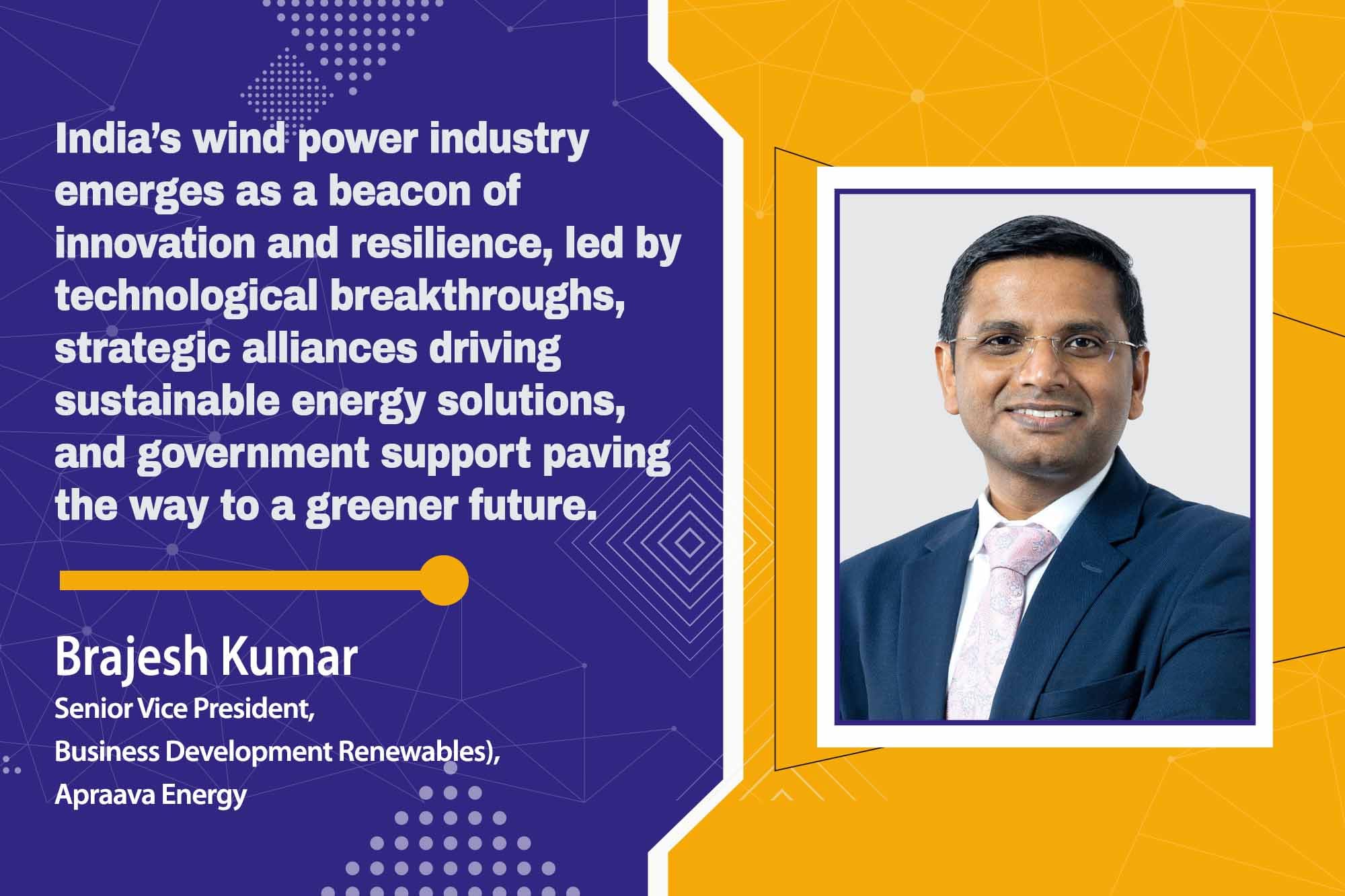Wind energy needs special benefits and exemptions like other RE projects
By EPR Magazine Editorial May 25, 2024 7:07 pm IST
By EPR Magazine Editorial May 25, 2024 7:07 pm IST

India’s wind power industry emerges as a beacon of innovation and resilience, led by technological breakthroughs, strategic alliances driving sustainable energy solutions, and government support paving the way to a greener future.
India’s wind power sector is experiencing significant growth due to market dynamics and government initiatives. It’s a vital part of India’s renewable energy landscape and attracts investments.
Market Forces Driving Wind Power Growth & Stakeholder Challenges
The growth of wind energy in India testifies to the success achieved by the private sector within the ambit of the framework established by the Government and the regulators in the form of feed-in tariffs, tax benefits, renewable purchase obligations, etc.
The initial phase of growth, from 1995-2010, was led by corporates seeking tax benefits. However, in the past 10 years, IPPs have led the growth, with large-scale wind projects across the country’s wind-rich states.
The other key factors contributing to the growth of wind energy include the huge untapped wind potential in the country, the flourishing domestic manufacturing supply chain for wind turbines and allied components, and lower development costs as compared to developed countries.
Amid a strong push for energy transition, we are seeing an increasing number of wind and solar projects being co-developed to improve synergies in generation and make better utilisation of grid infrastructure and other resources. However, wind projects, owing to the large area they require, generally face challenges pertaining to land acquisition and ‘right of way’ during the development phase.
Innovations Enhancing Wind Project Efficiency & Cost-efficiency
Over the past 6-7 years, tariffs for wind projects have remain stable despite a significant increase in the raw material prices and costs associated with project development activities such as land acquisition and securing ‘right of way’. While balance-of-system (BOS) in wind power projects offers limited opportunities for cost reduction/optimisation, there has been a major shift in the size of wind turbines used in recent wind projects. Wind turbines of 3 MW+ are the norm, and it is expected that 4 MW+ turbines with higher hub height and larger rotor blades will start getting deployed soon. The other positive trend is in the number and variety of financing options available for renewable energy projects. Investors are using a basket of traditional and innovative financing options such as green bonds, investment trusts, and more, to optimise financing costs and enhance competitiveness.Battery Integration: Enhancing Wind Reliability, Grid Integration, Overcoming Barriers
Despite the increasing share of renewables in the energy mix, power generation in India is still dominated by fossil fuels. Coal and large hydro projects not only act as base loads but also provide balancing support to unpredictable RE generation. However, this arrangement will not be sustainable as RE generation continues to increase; we will need to implement additional measures such as energy storage.
Currently, the most viable storage technologies are battery storage (BESS) and pumped hydro storage (PHS). While PHS is cheaper, it comes with issues such as long gestation periods, location constraints, and size. BESS doesn’t have these problems. With its modular nature and huge cost-reduction potential, BESS is the most promising storage system. Economies of scale and domestic manufacturing could address the challenges – such as higher costs, and technical know-how – associated with large-scale adoption of BESS.
Navigating India’s Wind EPC Market: Tactics for Success Amidst Regulations
India’s wind market has been shaped by wind turbine OEMs, which not only supplied turbines but also undertook the development of wind farms and O&M services after commissioning, under a turnkey development model. Since the advent of competitive bidding, OEMs have largely focused on the supply of wind turbines to preserve their margins, while IPPs have adopted different models for engineering, procurement, and construction of wind farms. Large IPPs have developed in-house capabilities for engineering and procurement. The development and construction of wind farms has become fragmented, with several medium-and-small-scale developers, mostly regional players, offering services in these segments. It would be highly beneficial to have large EPC players who can provide a comprehensive suite of services across the renewable energy segment and can deliver projects on time and with the desired performance.
Spokesperson: Brajesh Kumar, Senior Vice President, Business Development (Renewables), Apraava Energy
We use cookies to personalize your experience. By continuing to visit this website you agree to our Terms & Conditions, Privacy Policy and Cookie Policy.